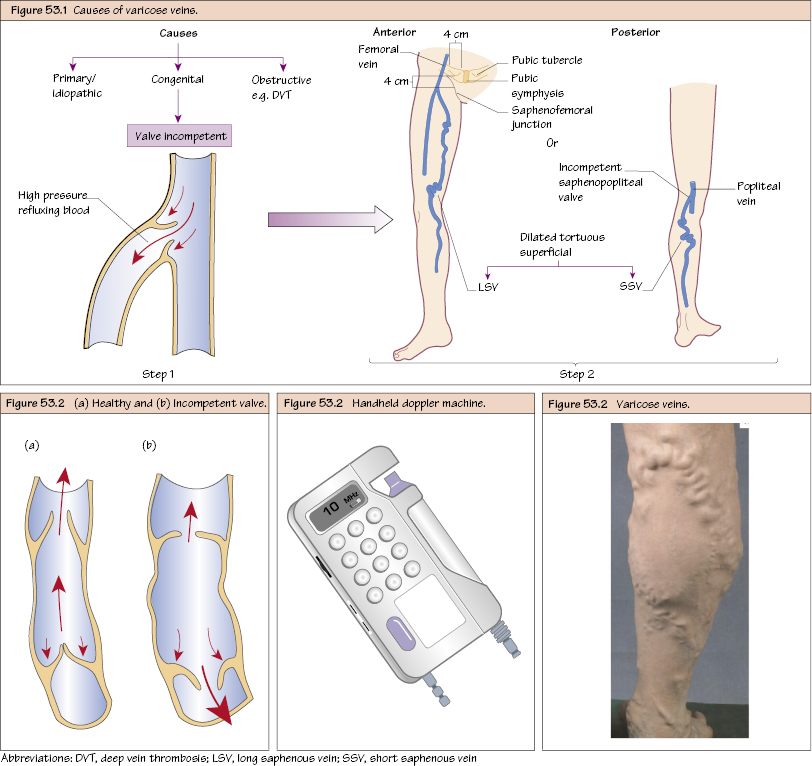Varicose Veins and Venous Hypertension Varicose veins (VVs) are dilated, tortuous, superficial veins. By far, the legs are the most common site. They are extremely common, affecting approximately 30–40% of the population to some degree. They affect men and women roughly equally although women are more likely to present to their doctor. There are two superficial systems of veins that drain from the foot into the deep leg veins at two key points: the saphenofemoral junction (SFJ) and the saphenopopliteal junction (SPJ) (see Chapter 2). The deep veins are under high pressure – imagine a column of blood all the way from the heart to your foot. The superficial veins, however, are normally low pressure veins and are protected from this high pressure system by veins at these junctions. Varicose veins develop because these valves become incompetent so blood refluxes back into them. Consequently they become dilated and because they’re fixed at certain points along their length they become tortuous. The causes are:

Definition
Epidemiology
Aetiology
Stay updated, free articles. Join our Telegram channel

Full access? Get Clinical Tree


